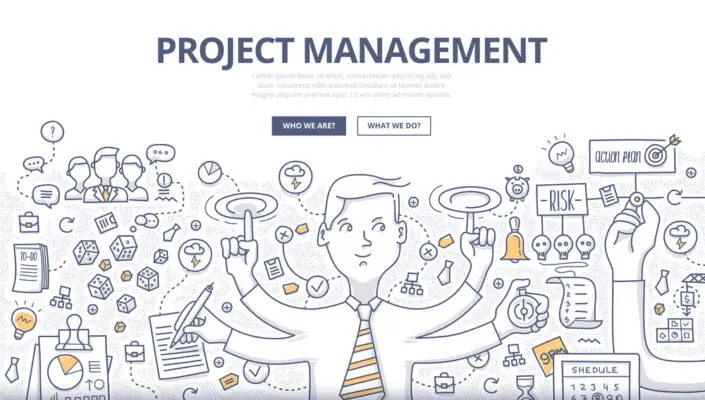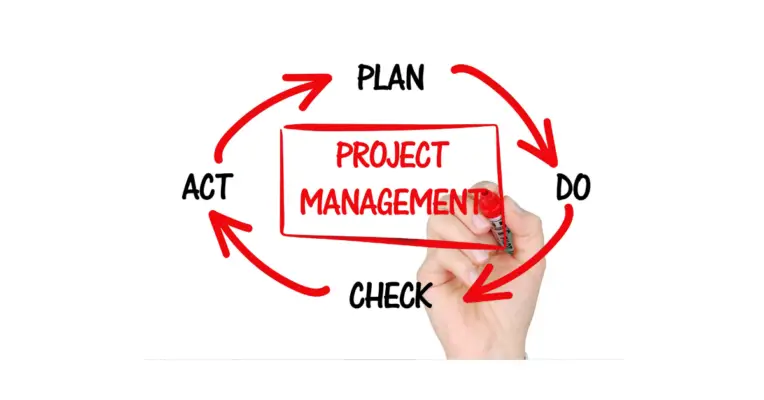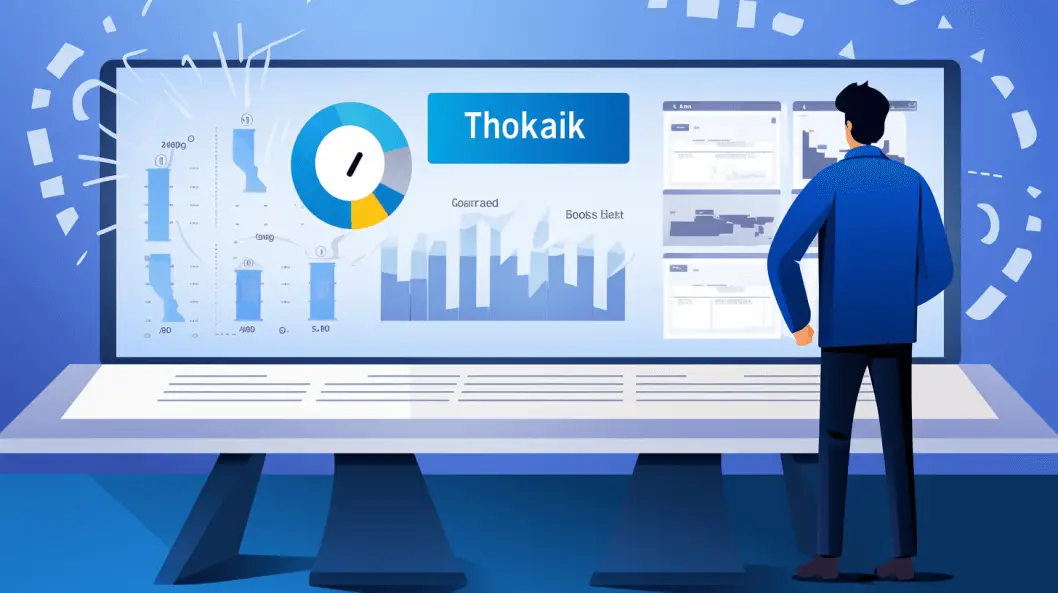Risk tolerance is a crucial aspect of project management that necessitates a systematic and analytical approach for effective decision-making. Understanding an organization’s tolerance for risk enables project managers to identify, assess, and mitigate potential risks.
This article comprehensively analyses the factors influencing risk tolerance in project management. Project managers can gain valuable insights into determining their tolerance for risk and implementing effective risk management strategies by studying different methodologies and frameworks.

Background
Risk tolerance refers to the degree of uncertainty or potential loss that an individual or organization is willing to accept to pursue a particular goal or objective.
Risk tolerance plays a crucial role in determining the level of risk that stakeholders are willing to take on.
In today’s dynamic and uncertain business environment, organizations face many challenges and risks that can significantly impact their success.
Making effective investment decisions is crucial for financial stability and growth. Organizations need to carefully evaluate the potential risks and rewards associated with different investment opportunities to ensure they align with their overall strategic goals and risk appetite.
Corporate culture plays a vital role in shaping an organisation’s risk appetite. It encompasses the values, beliefs, and behaviors that guide decision-making and risk-taking within the company.
A strong organizational culture that promotes open communication, transparency, and ethical behavior can help foster a risk-aware and risk-responsive environment.
Understanding project risks and risk factors is essential for effective risk management. Organizations need to identify and assess potential risks that could jeopardize the successful completion of a project. Organizations can develop plans to mitigate or manage risks by assessing their probability and potential impact.
Determining acceptable risk exposure is a critical aspect of risk management. Business leaders need to establish a comfort level with the level of risk they are willing to undertake to achieve their objectives. This involves balancing the potential rewards of taking on more risk against the potential negative consequences.
Various frameworks and standards, such as ISO 31000:2009 and the Office of Government Commerce, guide risk management practices. These frameworks help organizations establish acceptable variations in risk exposure and provide a structured approach to identify, assess, and respond to risks.
The Association of Insurance and Risk Managers and the Institute of Risk Management are professional bodies that promote developing and applying risk management practices. They provide resources and support to help organizations enhance their risk management maturity and capabilities.
Organizational risk appetite refers to the level of risk an organization is willing to accept in pursuit of its objectives. It is influenced by factors such as the organization’s industry, competitive landscape, regulatory environment, and risk tolerance of key stakeholders.
Risk appetite can also be influenced by relational risk perception, which refers to how individuals within an organization perceive and interpret risks. Individuals may have varying attitudes towards risk, and their risk perceptions can shape the organisation’s overall risk appetite.
Risk appetite is often metaphorically described as a hunger for risk. It reflects the organization’s willingness to take on risk and its ability to tolerate and manage the potential negative outcomes.
Risk tolerance is closely related to risk appetite but refers to the maximum risk an organization can absorb without taking additional risk management actions. It represents the level of risk exposure that is considered acceptable.
Effective risk management involves the identification, assessment, and mitigation of risks. It requires organizations to develop risk registers, which provide a comprehensive overview of all identified risks and their associated characteristics.
Software development risk management is a specialized area that focuses on managing risks associated with software development projects. It involves identifying and addressing potential risks throughout the project lifecycle to ensure successful delivery.
Unmanaged risk appetite can lead to excessive risk-taking and potential negative consequences. Organizations need effective risk management processes to ensure that risk-taking is aligned with their risk appetite and that risks are adequately addressed.
Acceptance of risk may vary among different types of investors. Some investors, known as aggressive risk investors, are willing to take on higher levels of risk in pursuit of higher returns. Others may have a more conservative approach and prefer to minimize risk as much as possible.
The application of risk management should be consistent and constant, regardless of the organization’s risk appetite. While risk appetite may vary, the need for effective risk management remains constant to ensure the organization’s long-term success.
Critical risk factors are those risks that have the potential to significantly impact the achievement of strategic goals or the overall success of an organization. Organizations must identify and actively manage these critical risks to minimize their potential negative impact.
Organizations must consider various factors in international bidding decisions, such as political stability, economic conditions, legal frameworks, and cultural differences. These factors can pose significant risks and need to be carefully evaluated before making bidding decisions.
Decision trees are useful for analyzing decision alternatives and their potential outcomes. Organizations can make more informed and rational decisions by mapping out different decision paths and their associated probabilities and payoffs.
Bilateral control refers to a control process where both parties involved in a transaction have equal decision-making authority and influence. Conversely, unilateral control occurs when one party has more power and control over the decision-making process.
Design time and internet time refer to the speed at which product development programs and decision-making processes occur. Design time refers to the traditional timeline for developing and launching products, while internet time refers to the accelerated pace enabled by digital technologies.
The competitiveness of companies in the market is often influenced by their ability to manage risks and make strategic decisions effectively. Organizations with a robust risk management framework and a culture encouraging risk-aware decision-making are better positioned to maintain competitiveness.
In decentralized settings, decision-making authority is distributed across different levels or units of an organization. This can pose challenges in coordinating and aligning decision-making processes, particularly in complex B2B settings involving multiple stakeholders.
Effective risk management and decision-making are crucial for organizations to achieve financial stability, navigate uncertainties, and capitalize on opportunities. By understanding and managing their risk appetite, organizations can make informed and strategic decisions that align with their objectives and ensure long-term success.
It involves carefully assessing the potential impact of risks on project outcomes and establishing strategies to mitigate or manage those risks effectively.
Definition of Risk Tolerance
Risk tolerance in project management is the extent to which an individual or organization is willing to accept and handle uncertain events or outcomes.
It represents the decision-making process regarding accepting or avoiding risks based on the stakeholders’ objectives, company goals, and risk attitude. Project managers play a crucial role in assessing and managing risk tolerance.
To determine risk tolerance, project managers need to consider various factors, including the organization’s risk threshold and the potential impact of risks on project objectives.
Analyzing risk tolerance involves evaluating the potential consequences of different risk scenarios and identifying the level of risk that the organization is willing to accept. By understanding risk tolerance, project managers can make informed decisions and develop effective risk management strategies to mitigate potential threats to project success.
Next, we will delve into analyzing risk tolerance in project management.
Analyzing Risk Tolerance
To effectively analyze risk tolerance in project management, it is important first to understand the project objectives and strategic objectives. This involves identifying the goals and desired outcomes of the project, as well as the broader strategic goals of the organization.
Once these objectives are clear, the next step is to assess the level of uncertainty and degree of risk involved in the project. This requires evaluating the potential impact and likelihood of various risks and determining the level of risk that the project team is willing and able to accept.
It is also important to identify the types of risks involved, such as technical, financial, or operational, to develop appropriate risk management strategies.
Understanding the Project Objectives and Strategic Objectives
Examining the project and strategic objectives, a clearer understanding can be gained regarding the level of risk tolerance that should be considered in project management.
Strategic objectives define an organisation’s overall direction and goals, while project objectives outline the specific aims of a project.
To determine risk tolerance levels, project managers must assess the organization’s risk capacity and the degree of uncertainty associated with the project. This assessment involves identifying potential risk scenarios and conducting a comprehensive risk assessment.
It is important to consider the organization’s tolerance for risk and the type of risk involved in the project. The project team’s expertise and experience in managing risks should also be considered.
Understanding the project and strategic objectives provides a foundation for establishing an appropriate risk tolerance level in project management.
Assessing the Level of Uncertainty and Degree of Risk Involved
Assessing the level of uncertainty and degree of risk involved requires a comprehensive understanding of the project and strategic objectives and evaluating the organization’s risk capacity and potential risk scenarios.
To determine the level of risk tolerance in project management, the following factors should be considered:
- Level of risk exposure refers to the potential impact of risks on project objectives and the organization’s ability to handle them.
- Level of uncertainty: This involves assessing the degree of unpredictability and ambiguity associated with the project.
- Acceptable level of risk: Organizations must define their risk appetites and establish the maximum level of risk they are willing to accept.
- Control and management of risk: Identifying and implementing appropriate risk management strategies and controls to mitigate potential risks is crucial.
Determining a Risk Capacity for the Project Team
To determine a risk capacity for the project team, it is necessary to consider the risks that may arise during the project. Risk events can have varying degrees of impact on the project’s objectives and can occur at any point in time.
Risk managers should assess the team’s risk appetite statements, which outline the team’s willingness to accept and tolerate risks.
This will help determine the team’s risk tolerance range, which is the acceptable level of risk exposure. Risk treatment strategies should also be developed to mitigate the impact of risk events.
The project team can ascertain their risk capacity and make well-informed risk management decisions by considering these factors.
After determining the risk capacity for the project team, the next step is to identify the types of risks involved.

Identifying Types of Risks Involved
Identifying the risks involved requires a comprehensive analysis of the potential threats and uncertainties that may impact the project’s objectives. In project management, understanding the various types of risks is crucial for effective risk management strategies and decision-making processes.
The following list outlines four common types of risks that project professionals must consider:
- Technical Risks: These risks are related to the project’s technology, infrastructure, and systems. They may include issues with software development, hardware failures, or compatibility challenges.
- Financial Risks include the project’s budget, funding, and financial resources. They encompass cost overruns, fluctuating exchange rates, or inadequate financial planning.
- Schedule Risks: These risks involve delays or project timeline disruptions. They may arise from unexpected events, resource constraints, or poor project scheduling.
- External Risks: These risks are external to the project and beyond the project team’s control. Examples include changes in government regulations, natural disasters, or economic downturns.
Risk professionals and decision-makers can develop effective risk management processes and establish an acceptable level of risk exposure for the project by identifying various types of risks.
This approach ensures that potential risks are addressed and mitigated in a timely manner to minimize their impact on project outcomes.
The next step in the risk management process is establishing an acceptable level of risk exposure.
Establishing an Acceptable Level of Risk Exposure
Establishing an acceptable level of risk exposure involves evaluating the potential impact of risks on the project’s desired outcomes and determining appropriate measures to mitigate their effects.
This process requires a thorough analysis of individual risks and their potential impact on the project’s success. Key stakeholders, such as the project management team, must be involved in this evaluation to ensure the risk tolerance aligns with the organization’s business objectives and financial goals.
Additionally, external factors, such as market conditions and regulatory changes, should be considered when determining the acceptable level of risk exposure. To facilitate this process, a 3×3 table can categorize risks based on their potential impact, likelihood of occurrence, and recommended mitigation measures.
| Risk Category | Potential Impact | Likelihood of Occurrence | Mitigation Measures |
|---|---|---|---|
| Financial Risks | High | Moderate | Diversification of investments |
| Operational Risks | Moderate | High | Implementing backup systems |
| Reputational Risks | Low | Low | Developing crisis communication plan |
Evaluating an Individual’s or Group’s Attitude Towards Risk
Evaluating an individual’s or group’s attitude towards risk requires examining their willingness to take on potential uncertainties and their perception of the potential rewards or losses associated with those risks.
To determine risk tolerance in project management, several factors should be considered:
- Internal Factors include personal characteristics, past experiences, and individual risk preferences. Risk-averse individuals may prefer to avoid or minimize risks, while risk-takers may be more open to taking on higher levels of risk.
- Negative Impact: Assessing the negative impact of potential risks is crucial. Individuals or groups may be more risk-averse if they perceive the potential losses as significant or if the impact of failure could be detrimental.
- Residual Risk: The level of residual risk that an individual or group is willing to accept after implementing risk management strategies can also indicate their risk tolerance. Those with a lower tolerance may prefer a more conservative approach, while those with a higher tolerance may be more comfortable with residual risk.
- Attitude of Stakeholders: Understanding the attitude of project stakeholders, including senior management, clients, and team members, is important. Their risk appetite can influence decision-making and the overall risk tolerance of the project.
The company culture also plays a role in shaping risk tolerance. Organizations with a risk-averse culture may prioritize risk mitigation, while those with a more risk-tolerant culture may be more open to taking calculated risks.
Evaluating these factors can help project managers develop a comprehensive risk management plan that aligns with the individual’s or group’s risk tolerance.
Establishing a Personal or Corporate Risk Appetite Statement
A clear and concise risk appetite statement is essential for guiding an organisation’s decision-making and risk management practices.
A risk appetite statement articulates the organization’s willingness to take risks to achieve its objectives and helps set the boundaries for risk-taking activities.
Organizations typically assess their attitude towards risk and determine their risk tolerance level to establish a risk appetite statement. This can be done through various methods, such as conducting risk assessments, analyzing historical data, and using decision trees to evaluate different risk scenarios.
The table below illustrates an example of a risk appetite statement, outlining different risk types and the organization’s desired level of risk tolerance for each.
| Risk Type | Desired Risk Tolerance |
|---|---|
| Financial Risk | Moderate |
| Operational Risk | Low |
| Strategic Risk | High |
| Compliance Risk | Very Low |
| Reputational Risk | Moderate |
Frequently Asked Questions
How Can Risk Tolerance Be Measured in Project Management?
Risk tolerance in project management can be measured by systematically assessing stakeholders’ willingness to accept uncertainty.
This can be accomplished by evaluating their preferences for risk-taking, aversion to loss, and ability to cope with potential negative outcomes.
What Common Factors Influence an Individual’s Risk Tolerance in Project Management?
Various factors influence an individual’s risk tolerance in project management. These include personal characteristics, such as risk perception and aversion, and organizational factors, such as the project’s objectives, stakeholder expectations, and the level of uncertainty involved.
Are Any Specific Tools or Frameworks Available to Assess Risk Tolerance in Project Management?
Specific tools and frameworks are available to assess risk tolerance in project management.
These tools aid in evaluating an individual’s willingness to accept risks and inform decision-making processes, contributing to effective risk management strategies.
How Can Project Managers Effectively Communicate and Align Risk Tolerance With Stakeholders?
Effectively communicating and aligning risk tolerance with stakeholders in project management requires a systematic approach that considers the project’s objectives, stakeholders’ expectations, and the potential impact of risks on project outcomes.
What Are Some Strategies to Manage and Mitigate Risks in Projects With Varying Risk Tolerance Levels?
Strategies to manage and mitigate risks in projects with varying risk tolerance levels involve identifying and assessing risks, developing risk response plans, monitoring and controlling risks, and continuously evaluating and adjusting risk management strategies to align with project objectives and stakeholder expectations.

Conclusion
Risk tolerance is a crucial factor in project management as it helps determine the level of risk a project team is willing to accept. Understanding the different aspects of risk tolerance and how to analyze it effectively is important.
This article provides a background on risk tolerance in project management and outlines the steps to analyse it. Project managers can make better decisions and reduce risks by clearly understanding their team’s risk tolerance. With this knowledge, they can develop effective risk mitigation strategies.
Analyzing risk tolerance is a systematic process that requires careful assessment and consideration of various factors.
Determining risk tolerance is a critical aspect of project management that requires analytical thinking and thorough evaluation.
Project managers can improve their decision-making and achieve successful project results by evaluating and comprehending risk tolerance.

Chris Ekai is a Risk Management expert with over 10 years of experience in the field. He has a Master’s(MSc) degree in Risk Management from University of Portsmouth and is a CPA and Finance professional. He currently works as a Content Manager at Risk Publishing, writing about Enterprise Risk Management, Business Continuity Management and Project Management.

